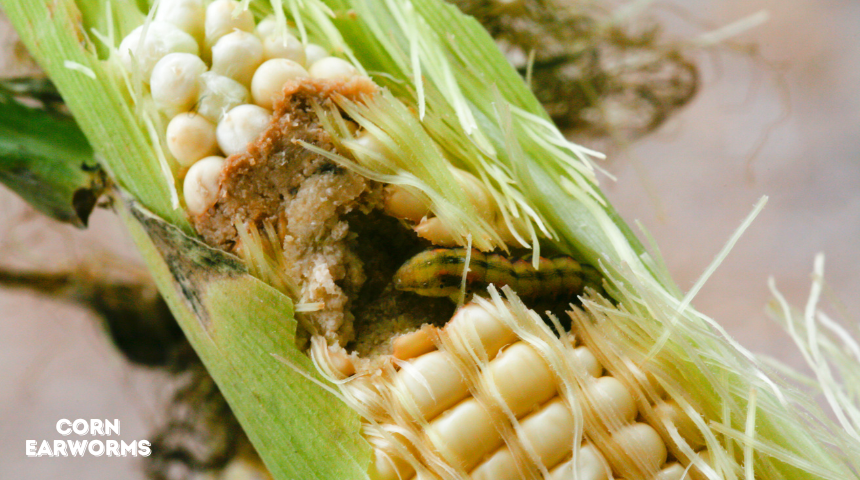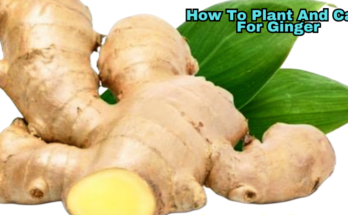Gardening has always been a passion of mine. One of my favorite crops to cultivate is corn. In this guide, I will show you How Do I Grow Corn. successfully.
Growing corn can be simple and rewarding with the right steps. I’ve spent years perfecting my techniques. Now, I want to share them with you.
Corn thrives in full sunlight. Make sure to choose a sunny spot in your garden. The soil should be well-drained and fertile. I always test my soil before planting. You can buy a simple soil test kit online.
Watering is essential. Keep the soil consistently moist. Fertilizing helps boost growth. Use a balanced fertilizer for the best results. Follow these tips, and you’ll enjoy a bountiful corn harvest.
How Do I Grow Corn?
To grow corn, start by choosing a sunny spot in your garden. Corn needs full sunlight. Test the soil for pH and fertility. Corn thrives in well-drained, fertile soil.
Plant the seeds about 1-2 inches deep and 9-12 inches apart. Water regularly to keep the soil moist. Use a balanced fertilizer to boost growth. Monitor for pests and diseases.
Choosing the Right Corn Variety
Before planting, it’s crucial to choose the right variety of corn. Corn comes in different types such as sweet corn, field corn, and popcorn.
Sweet corn is ideal for fresh eating, while field corn is perfect for animal feed or making cornmeal. Popcorn, of course, is great for a tasty snack.
When selecting a variety, consider your climate, soil type, and intended use. For instance, sweet corn varieties like Silver Queen and Golden Bantam are excellent for home gardens.
I prefer ‘Silver Queen’ for its sweet flavor and tender kernels.

Preparing the Soil
Corn thrives in well-drained, fertile soil. Start by testing your soil’s pH and fertility. Corn prefers a pH between 6.0 and 6.8. You can easily test your soil with a kit from your local garden center.
Improve your soil quality by adding compost or well-rotted manure. This boosts fertility and ensures good drainage. I always mix in organic matter before planting to provide a nutrient-rich environment for my corn.
Planting Corn
Timing is everything when planting corn. Plant your corn after the last frost when the soil temperature is at least 60°F. Space your seeds about 9-12 inches apart in rows that are 30-36 inches apart.
Plant the seeds about 1-2 inches deep. Make sure to water the soil well after planting. Keep the soil moist but not waterlogged. Corn grows best in well-drained, fertile soil.
Rotate your crops each year to prevent soil depletion and reduce pest problems. With the right care, your corn will thrive and produce a bountiful harvest.

Watering and Fertilizing
How much water corn needs at different growth stages
Corn needs consistent watering throughout its growth stages. During germination and seedling stages, keep the soil consistently moist. Once corn is established, it needs about 1-1.5 inches of water per week.
During tasseling and silking, which are critical stages for kernel development, ensure the soil remains moist. This period is crucial, and lack of water can affect yield and quality.
Tips for efficient watering
Efficient watering methods like drip irrigation and soaker hoses are ideal for corn. Drip irrigation delivers water directly to the soil, reducing evaporation and ensuring deep penetration.
Soaker hoses evenly distribute water along the rows, keeping the soil consistently moist. Water early in the morning to minimize evaporation and allow leaves to dry, reducing disease risk.
Types of fertilizers and when to apply them
Corn is a heavy feeder and requires nutrients at different stages. Apply a balanced fertilizer at planting time. When plants are about 6 inches tall, apply a nitrogen-rich fertilizer to support rapid growth.
Another application of nitrogen when plants are knee-high ensures strong stalks and healthy leaves. Fertilize again at the tasselling stage to support ear development.
Organic vs. synthetic fertilizers
Organic fertilizers, like compost and manure, improve soil structure and provide slow-release nutrients. They are environmentally friendly and promote healthy soil life.

Synthetic fertilizers, like urea or ammonium nitrate, provide immediate nutrients but can lead to soil degradation over time if used excessively. I prefer organic options for sustainable gardening.
Caring for Growing Corn
Common pests and diseases that affect corn
Corn can be affected by pests like corn earworms, aphids, and cutworms. Diseases such as smut and rust can also cause problems. Early detection and control are key to managing these issues.
Natural and chemical pest control methods
For natural pest control, introduce beneficial insects like ladybugs and lacewings to prey on aphids. Use Bt (Bacillus thuringiensis) to control caterpillars like corn earworms.
Neem oil is effective against various pests. For severe infestations, chemical insecticides may be necessary. Follow label instructions and apply during times when beneficial insects are less active.
Importance of weeding and mulching
Weeding is crucial to prevent competition for nutrients and water. Mulch around your corn plants to suppress weeds and retain soil moisture. Organic mulches, like straw or shredded leaves, also add nutrients to the soil as they decompose.
Tips for supporting tall corn plants
Tall corn plants may need support to prevent them from falling over, especially in windy areas. Hill the soil around the base of the plants to provide extra stability.
For additional support, use stakes or trellises. Ensure your plants are well-spaced to allow proper airflow and reduce the risk of disease.
Tips for a Successful Corn Harvest
As you embark on your corn-growing journey, here are a few extra tips to ensure a successful harvest:
Plant in Blocks: Corn is wind-pollinated, so planting in blocks rather than single rows will improve pollination and yield. Aim for at least four rows to maximize your chances of full ears.
Monitor Soil Moisture: Keep the soil consistently moist, especially during dry spells. Corn needs about 1-1.5 inches of water per week. Mulching can help retain moisture and reduce the need for frequent watering.
Hand Pollinate: If you have a small garden or poor pollination, consider hand-pollinating your corn. Gently shake the tassels over the silks to ensure pollen reaches the ears.
Thin Your Plants: If your corn plants are too close together, thin them out to prevent competition for nutrients and sunlight. Proper spacing promotes healthier, more robust plants.
Watch for Tassel Emergence: When the tassels (male flowers) appear, it’s crucial to keep the plants well-watered. This stage is critical for kernel development.
Overcoming Common Challenges
Growing corn can come with its set of challenges. Here’s how to tackle some common issues:
Poor Germination: If your seeds aren’t sprouting, check soil temperature and moisture levels. Cold or dry soil can hinder germination. Plant seeds when the soil is warm and consistently moist.
Stunted Growth: Lack of nutrients or water can cause stunted growth. Ensure your soil is fertile and water your plants regularly. Consider side-dressing with fertilizer during the growing season.
Pest Infestations:
Protecting Your Corn
Pest infestations can be a major challenge when growing corn, but with the right strategies, you can protect your crop and ensure a healthy harvest. Here are some common pests that affect corn and effective methods to control them.
Common Pests
Corn Earworms:
These caterpillars feed on the kernels at the tips of corn ears, causing significant damage.

Control Methods:
Handpick and destroy earworms when you see them.
Apply a few drops of mineral oil to the silks where they enter the ear.
Use Bacillus thuringiensis (Bt), a natural pesticide, to target larvae.
Aphids:
Small, sap-sucking insects that can weaken plants and transmit diseases.

Control Methods:
Spray a strong jet of water to dislodge aphids from plants.
Introduce beneficial insects like ladybugs and lacewings, which feed on aphids.
Use insecticidal soap or neem oil to treat severe infestations.
Cutworms:
Larvae that cut down young corn plants at the soil line.
Control Methods:
Place collars around seedlings to prevent cutworm damage.
Till the soil before planting to destroy cutworm larvae.
Use beneficial nematodes, microscopic worms that prey on cutworms.
FAQ
When should I plant corn?
Plant corn after the last frost. Ensure the soil temperature is at least 60°F.
How much water does corn need?
Corn needs about 1-1.5 inches of water per week. Keep the soil moist, especially during tasseling and silking.
What type of soil is best for growing corn?
3 Corn grows best in well-drained, fertile soil. Test your soil and amend it with compost if needed.
How far apart should I space corn seeds?
4 Space corn seeds 9-12 inches apart. Keep rows 30-36 inches apart for proper growth.
How do I control pests on my corn plants?
Use natural predators like ladybugs. Apply neem oil or Bt for pest control. Handpick pests if infestations are small.
Conclusion
Growing corn is more than just planting seeds and waiting for them to grow. It’s a journey filled with learning, patience, and reward.
By following the steps outlined in this guide, you’ll be well on your way to enjoying fresh, home-grown corn. Remember, every garden is unique, and part of the joy of gardening is discovering what works best for you.
Thank you for being part of my gardening journey. Together, we can cultivate beautiful and bountiful gardens. Happy gardening, and here’s to a successful corn harvest!



